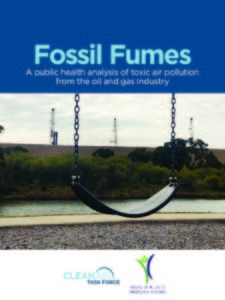Oklahoma is considered among a handful of states with the greatest cancer risk to oil and gas workers from methane and air toxics emissions in the industry, according to a new report from the Clean Air Task Force.
The study found that areas with the greatest health risk are generally located in states with the greatest amount of oil and gas infrastructure including Texas, Louisiana, North Dakota, Pennsylvania and Colorado. Researchers say there’s good reason methane pollution from the oil and gas supply has received increased attention as the U.S. works toward implementing ambitious climate goals. Methane is a greenhouse gas 87 times more potent than carbon dioxide and the oil and gas industry is the largest source of methane pollution, contended the researchers.
The report said 40 counties in Oklahoma exceed the EPA’s cancer risk level of concern while Osage, McClain, Hughes, coal and Pittsburgh Counties have the highest levels in the state. The lower risk areas of the state are in the southwest, the western reaches of the Panhandle and southeast Oklahoma.
Of the state’s population of 3,751,351, the Clean Air Task Force claims that 99,482 residents are considered to be a “threatened population” because of their proximity to high methane pollution. The high risk area covers an area of 3,812.5 square miles and includes seven medical facilities and 69 schools.
They claimed their studies showed 238 counties in 21 states face cancer risk exceeding the Environmental Protection Agency’s one-in-a-million threshold level of concern. Another 43 counties face a risk that exceeds one in 250,000 and 2 counties face a cancer risk that exceeds one in100,000.
Thirty-two counties also face a respiratory health risk from toxic air emissions that exceeds the EPA’s level of concern.
“These hazardous toxic air pollutants harm the health of communities living near oil and gas facilities such as oil and gas wells, compressor stations and processing plants,” concluded the study.






